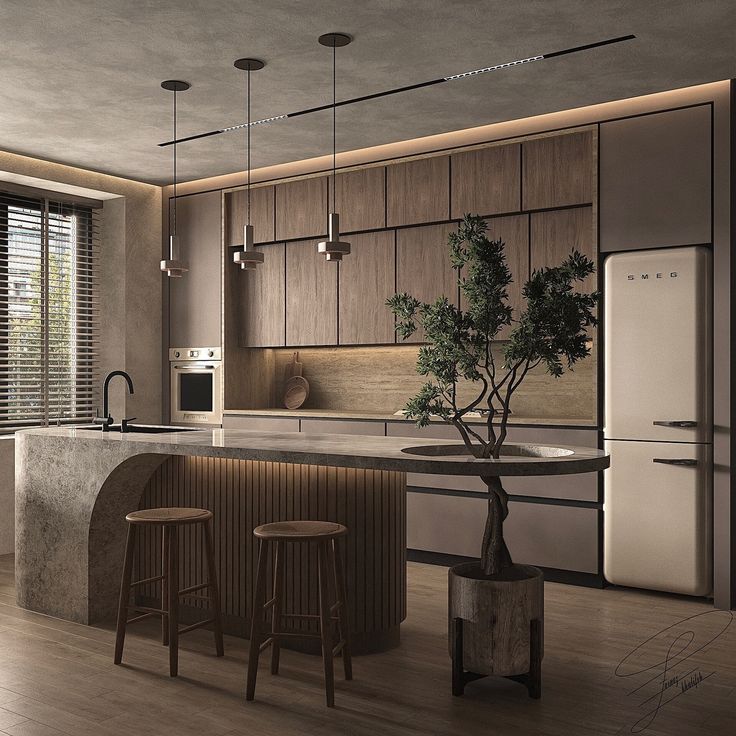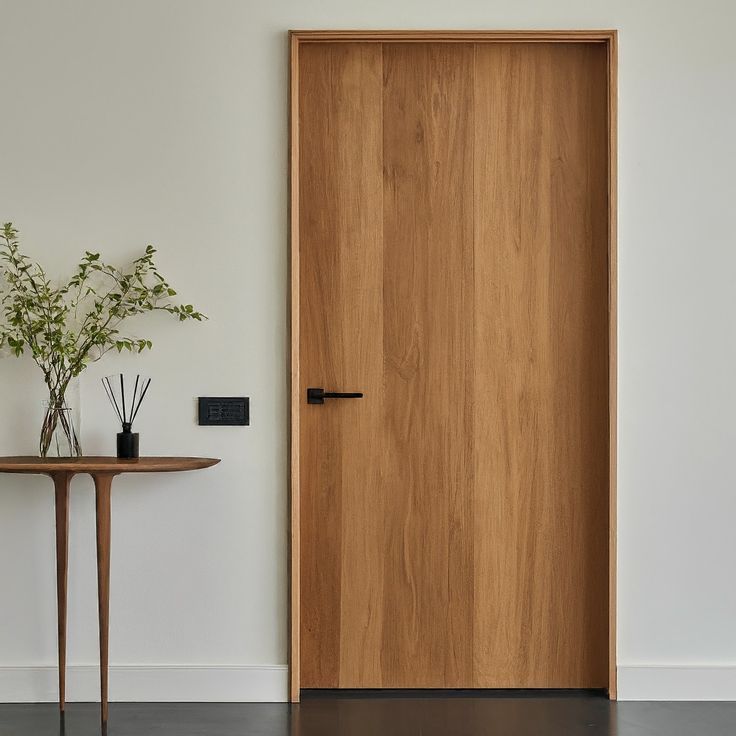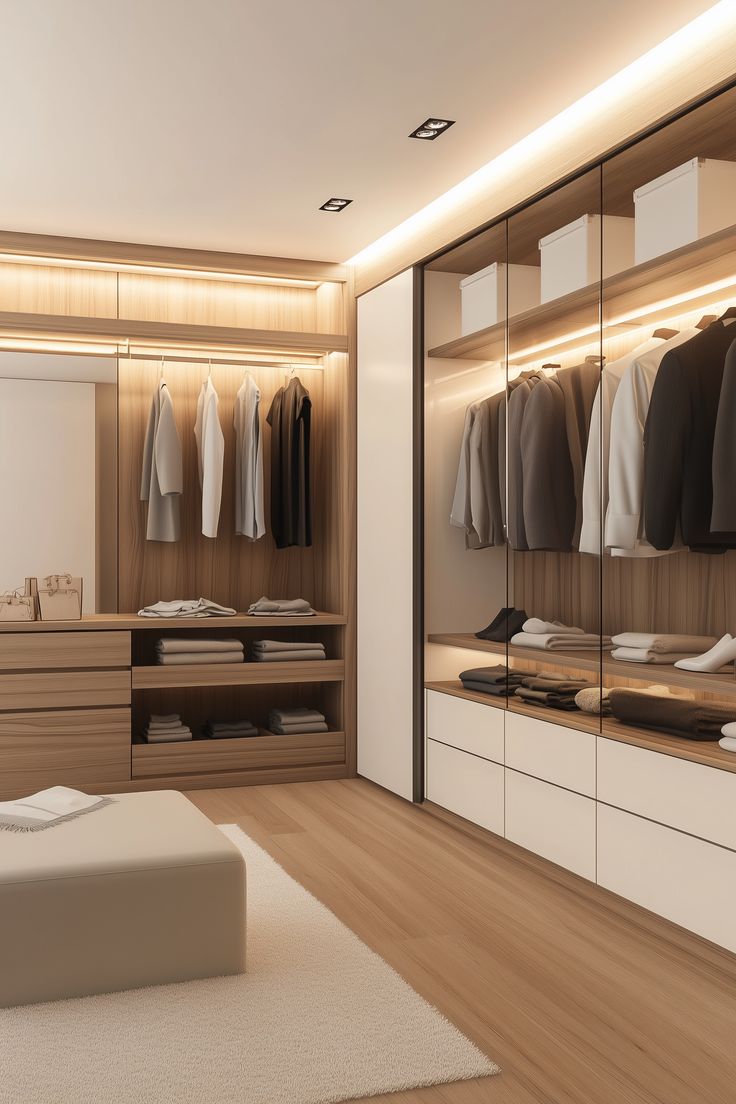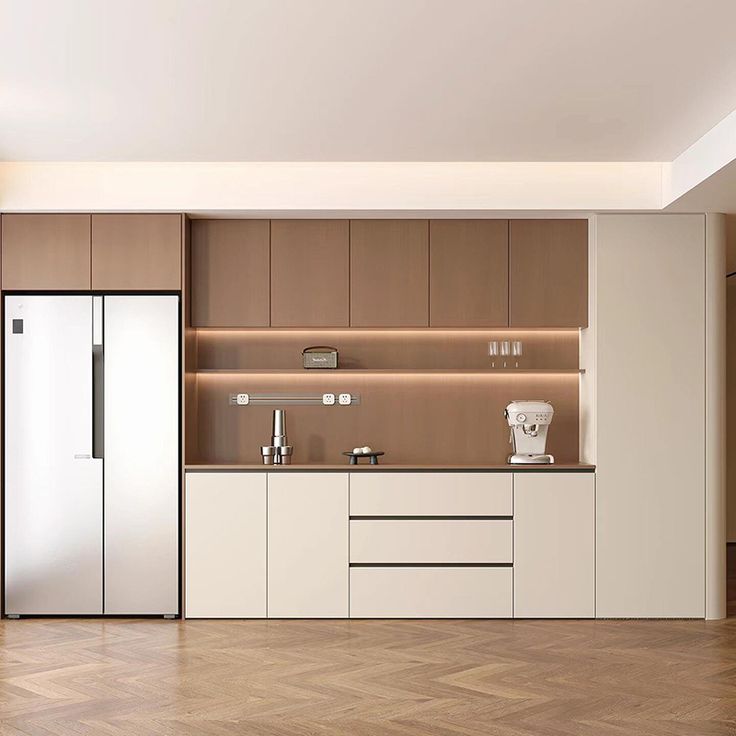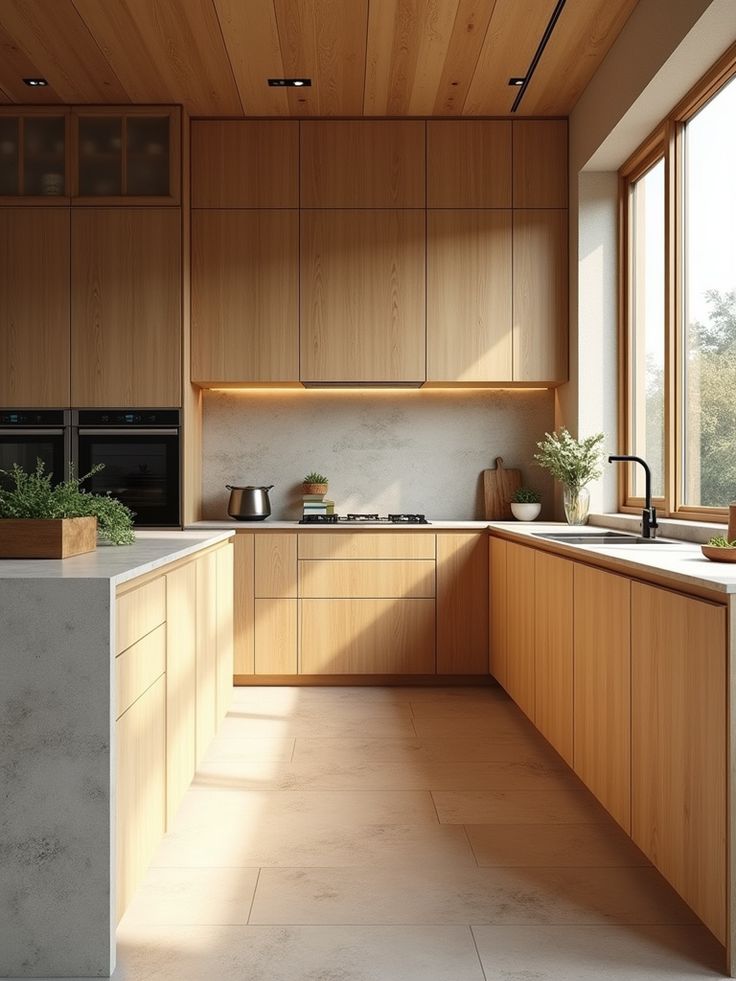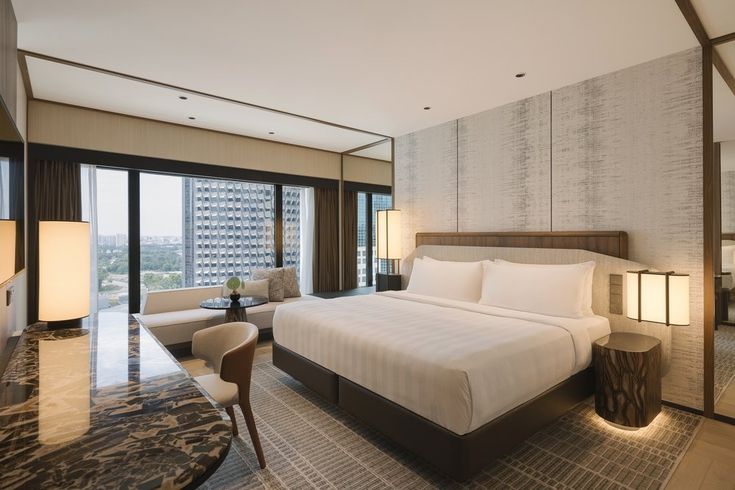Total Cabinetry And Joinery Solution
ENG
Interior doors are more than just functional barriers — they define transitions, control light and sound, and elevate the overall look of a home or commercial space.
As we move into 2026, interior door design trends focus on simplicity, natural textures, and innovative materials that blend aesthetics with performance.
Whether you’re a developer, designer, or homeowner, understanding different types of interior doors helps you select the best solutions for style, function, and budget.
Here are the 11 most popular types of interior doors you should know in 2026.

Description:
Flush doors feature a smooth, flat surface on both sides — usually made from MDF, plywood, or particle board with a hollow or solid core.
Why It’s Popular:
Their minimalistic design fits perfectly in modern apartments and commercial projects where simplicity and cost-efficiency matter.
Best For:
Contemporary interiors, hotel rooms, and offices.
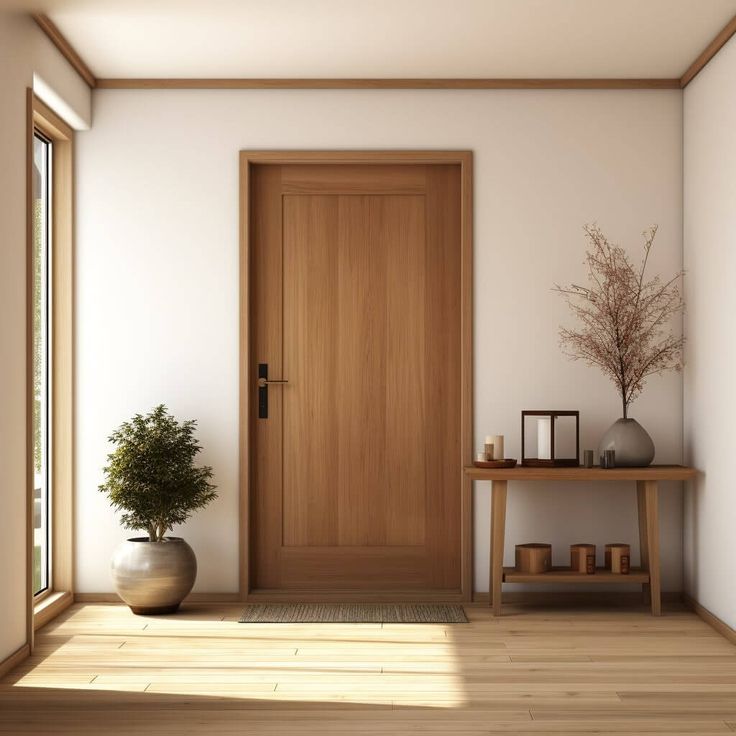
Description:
Panel doors are made of stiles and rails forming rectangular or square panels. They can be crafted from solid wood, HDF, or composite materials.
Why It’s Popular:
Classic and timeless, these doors add depth and texture to traditional and transitional interiors.
Best For:
Villas, townhouses, or any project seeking a balance between elegance and structure.
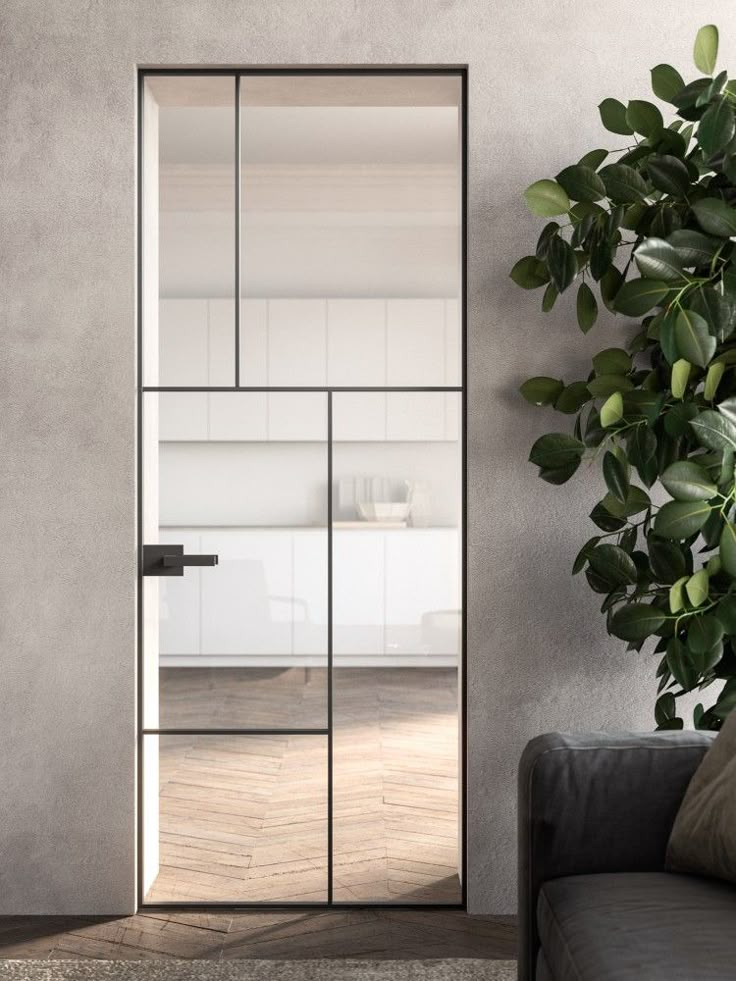
Description:
Glass interior doors allow light to flow between rooms while maintaining separation. Options include frosted, tinted, tempered, or patterned glass.
Why It’s Popular:
They create a sense of openness and brightness, ideal for compact or modern living spaces.
Best For:
Kitchen entrances, offices, or living room dividers.
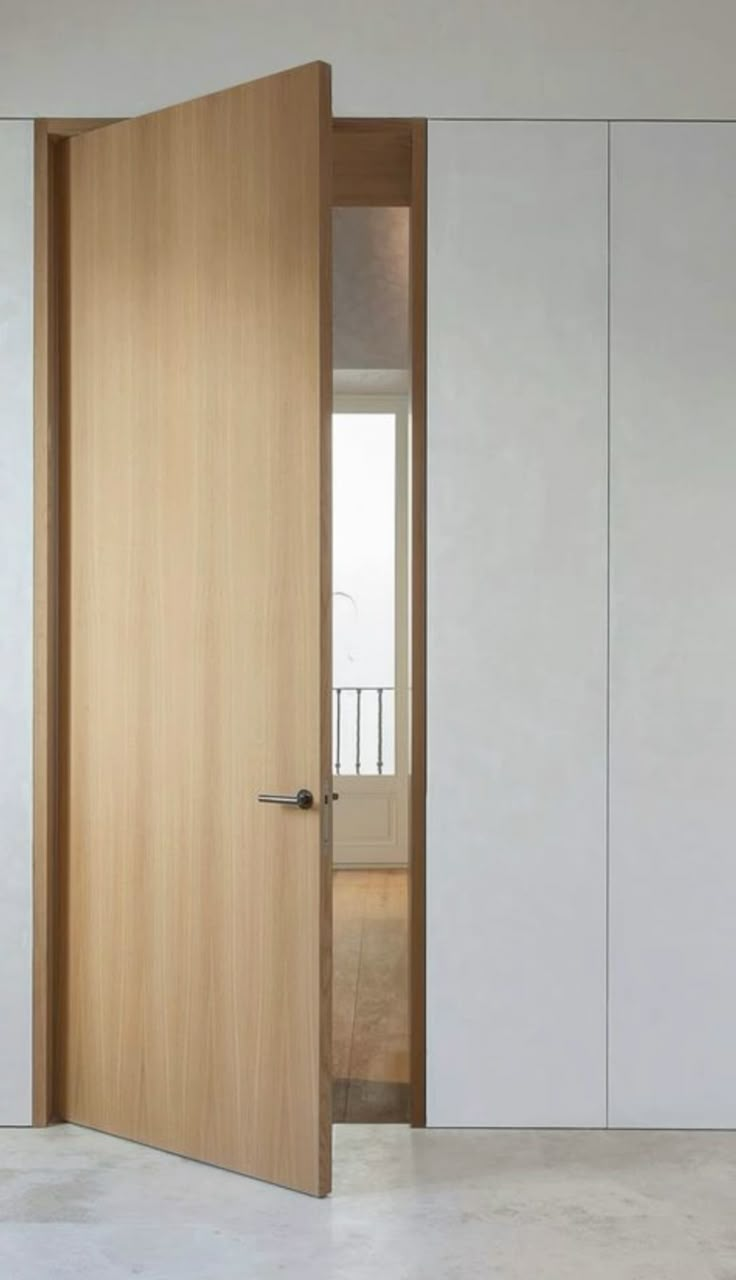
Description:
Sliding doors operate on a track system, moving horizontally instead of swinging. They can be single or double panels made of glass, wood, or aluminum frames.
Why It’s Popular:
They save space and create a clean, modern transition between rooms.
Best For:
Apartments, wardrobes, and balcony partitions.
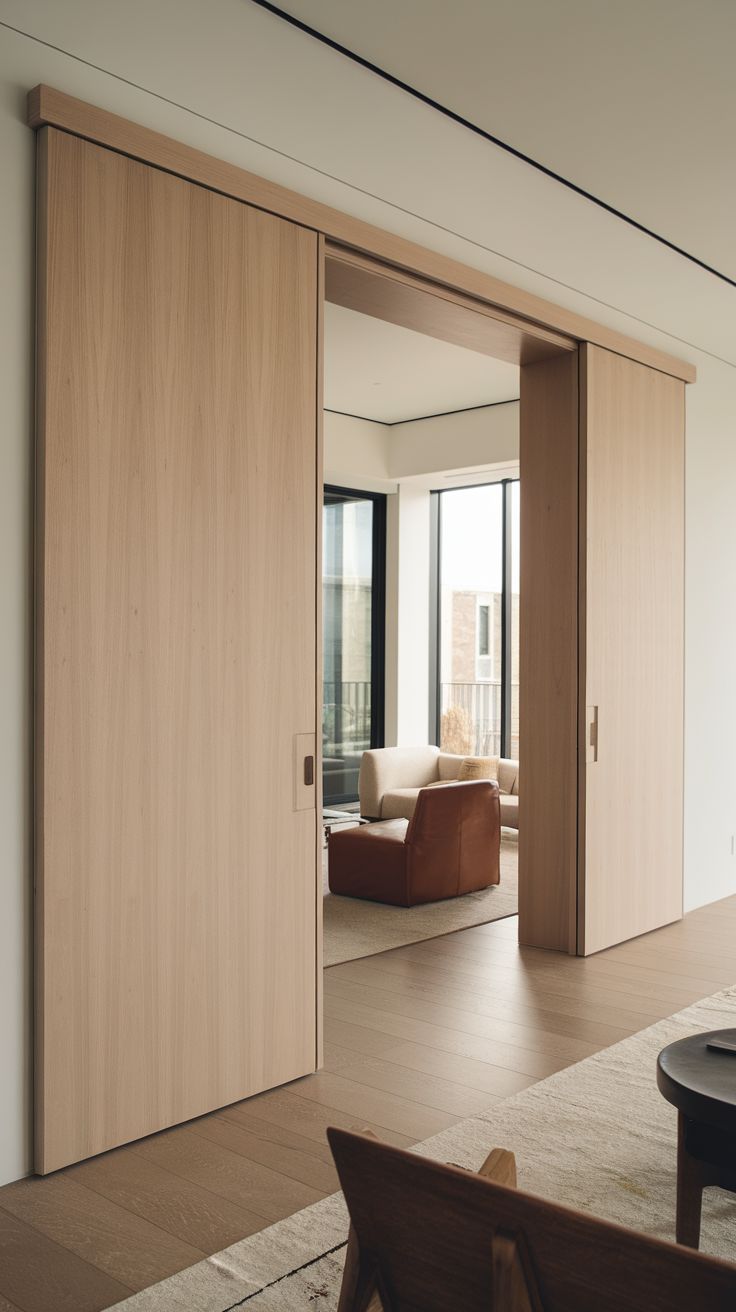
Description:
Pocket doors slide into a hidden cavity inside the wall, completely disappearing when opened.
Why It’s Popular:
They are the ultimate space-savers and perfect for tight floor plans.
Best For:
Bathrooms, laundry rooms, or small studio apartments.
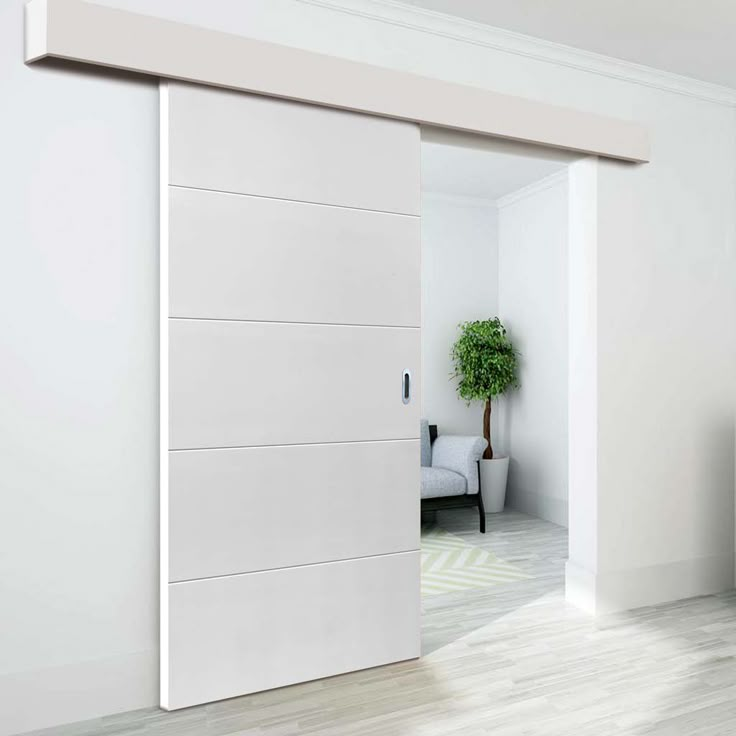
Description:
Barn doors slide along exposed metal tracks, adding rustic charm with a modern twist. They’re often made from reclaimed wood or engineered materials for durability.
Why It’s Popular:
Combines farmhouse warmth with industrial chic — trending in 2026 for boutique apartments and hospitality projects.
Best For:
Living areas, kitchens, or creative commercial spaces.
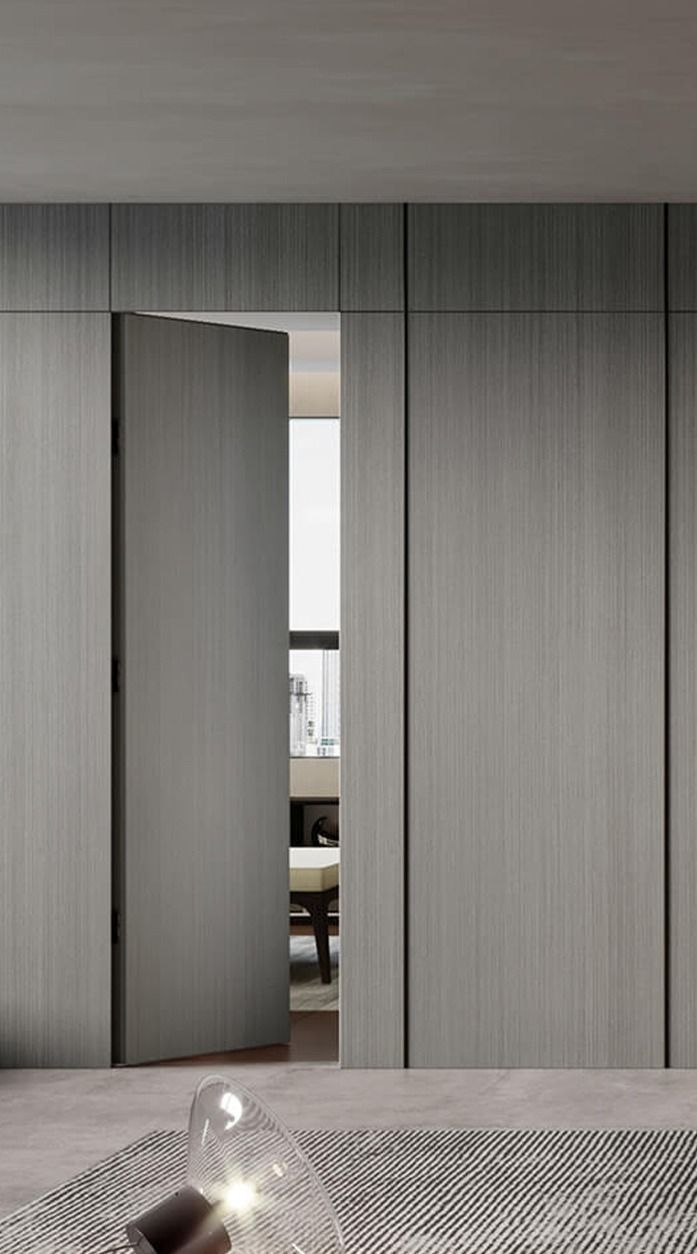
Description:
Bifold doors consist of two or more hinged panels that fold together when opened.
Why It’s Popular:
They offer flexibility and save space while allowing wide openings for closets and pantries.
Best For:
Wardrobes, kitchens, and utility rooms.
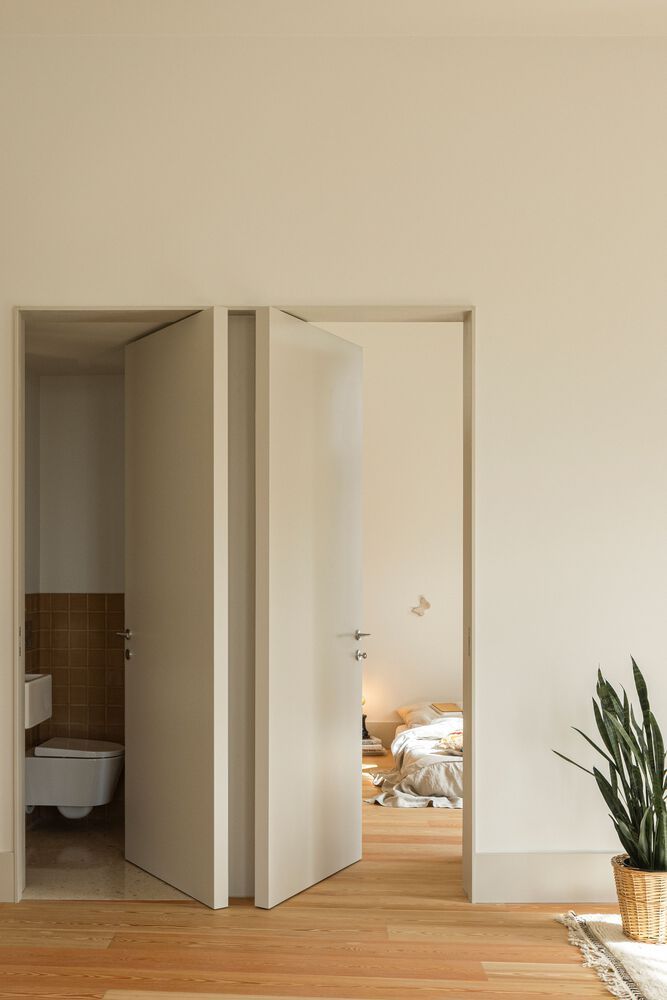
Description:
Louvre doors feature horizontal slats that allow ventilation while maintaining privacy. They can be made of wood, MDF, or PVC.
Why It’s Popular:
Perfect for humid areas, they provide airflow and reduce moisture buildup.
Best For:
Laundry rooms, wardrobes, and mechanical closets.
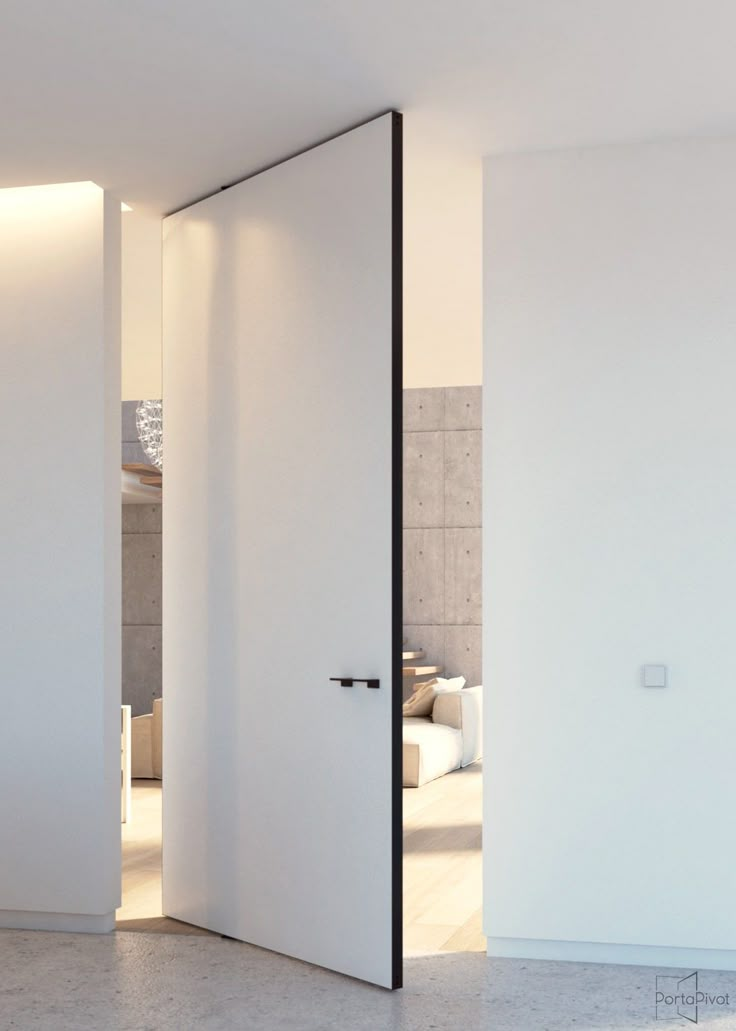
Description:
Pivot doors rotate on a central axis rather than traditional side hinges, creating a bold, architectural statement.
Why It’s Popular:
Their elegant movement and seamless design enhance luxury interiors and high-end commercial spaces.
Best For:
Luxury apartments, showrooms, and hotel suites.
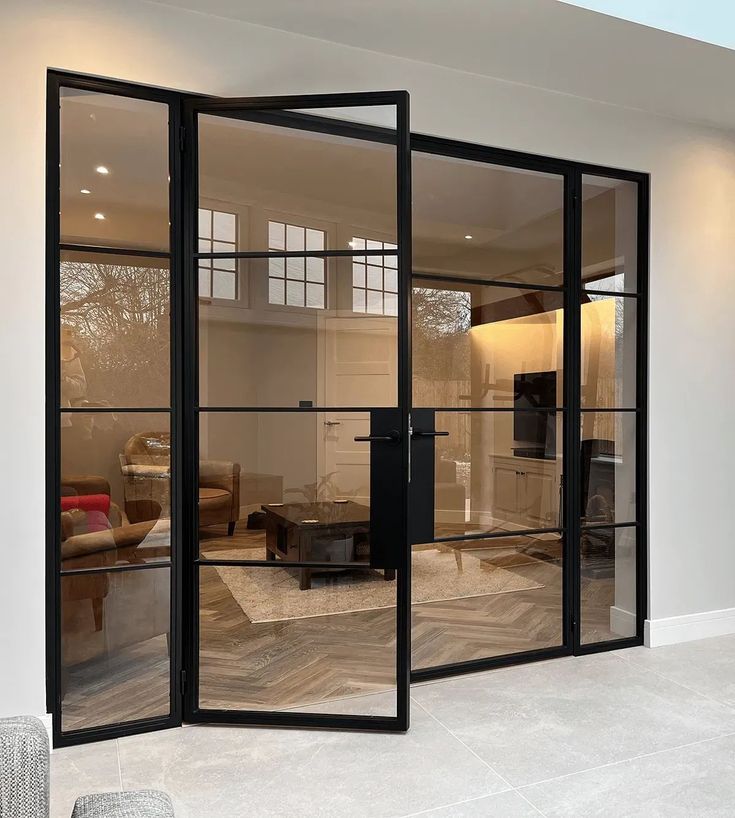
Description:
French or double doors consist of two panels opening from the center. They can be made from solid wood, MDF, or glass combinations.
Why It’s Popular:
They add sophistication and openness, creating a smooth connection between rooms.
Best For:
Living rooms, master bedrooms, and entryways.
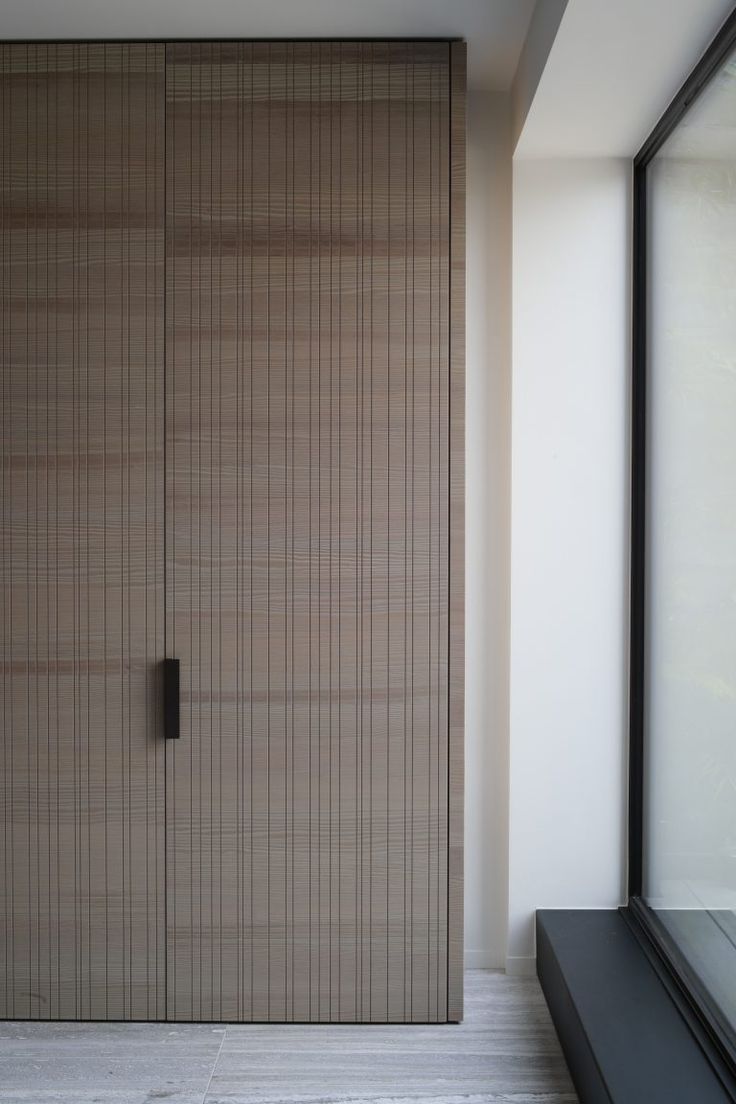
Description:
Acoustic interior doors are designed with soundproof cores and sealing systems to reduce noise transfer between spaces.
Why It’s Popular:
With growing demand for privacy in modern urban living, acoustic doors are a must for apartments, offices, and hotels.
Best For:
Bedrooms, home offices, and conference rooms.
Neutral Palettes: Shades of beige, taupe, and matte white dominate modern projects.
Texture Play: Wood grain laminates and soft-touch finishes add depth.
Smart Integration: Magnetic locks, digital handles, and automatic closers for high-end developments.
Sustainability: FSC-certified wood and eco-friendly lacquers lead the market.
Clean regularly with mild detergent and a soft cloth.
Avoid prolonged exposure to humidity or direct sunlight.
Lubricate hinges and sliding tracks annually.
For painted MDF or lacquered doors, use non-abrasive cleaning solutions.
The right interior door doesn’t just divide spaces — it enhances the entire design narrative of a project.
From minimalist flush doors to statement pivot doors, 2026 offers a wide spectrum of styles blending aesthetics, durability, and technology.
Whether you’re designing a modern apartment, a luxury villa, or a commercial space, understanding these 11 popular types of interior doors helps you choose materials and styles that reflect both function and personality.
1. What is the most popular interior door style in 2026?
Flush and sliding doors remain the most widely used in modern apartments due to their space-saving and minimalist appeal.
2. What materials are best for interior doors?
MDF, plywood, and solid wood are the top choices — offering a balance of strength, appearance, and affordability.
3. Are glass interior doors safe?
Yes, as long as they’re made with tempered or laminated glass, which is strong and shatter-resistant.
4. How do I choose between solid and hollow-core doors?
Solid-core doors provide better sound insulation and strength, while hollow-core doors are lighter and more budget-friendly.
5. Can interior doors be customized for large projects?
Yes. Most Chinese manufacturers offer custom door sizes, finishes, and materials for developers, contractors, and hotel projects.
